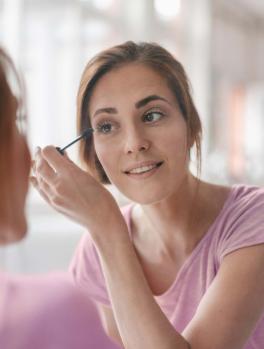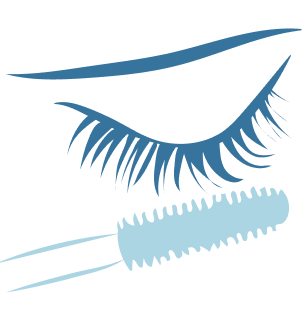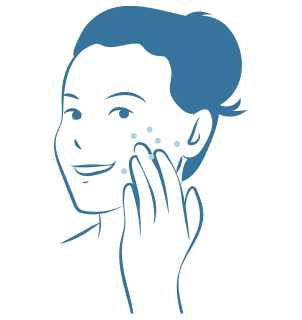Live better with eyelid eczema

Eyelid eczema, also known as eyelid dermatitis, is characterized by the appearance of dry, red plaques that cause itching and burning sensations. It can be caused by atopy (atopic eczema) or contact with an irritant (irritant eczema) but is most often due to an allergic reaction (contact eczema). It can affect both the upper and lower eyelids and cause discomfort and pain. There are a few tricks for limiting eyelid eczema flare-ups and keeping it from getting worse.
5 simple daily rituals
Apply
the prescribed medicinal treatment to plaques during flare-ups
Why?
To treat flare-ups as soon as possible
How?
Apply the prescribed treatment at the 1st signs of a flare-up (redness, itching) and until redness disappears completely
Moist
your eyelids regularly
Why?
- Soothes dry skin
- Restores the protective skin barrier
- Reduces the frequency of flare-ups
How?
- Apply thermal spring water compresses and/or an emollient to damp skin daily after cleansing
- Reapply as soon as skin feels tight
- Use products formulated specifically for eyelid eczema
Cleanse
skin gently
Why?
To avoid aggravating already fragile skin
How?
Wash your face with lukewarm water and soap-free, non-greasy products formulated for eczema-prone skin
Pay attention
to eye health
Why?
Ocular complications (conjunctivitis, keratitis) may occur in case of eyelid eczema
How?
- Schedule regular check-ups with your ophthalmologist
- When an eye problem persists for more than a few days, make an appointment with your general practitioner or ophthalmologist
Avoir
touching your eyes and eyelids
Why?
- Keeps the itching from worsening
- Reduces the risk of contact with a potential allergen on someone’s hands
- Limits the risk of onset or aggravation of ocular complications
How?
If you need to touch your eyes or eyelids, wash your hands beforehand and do so gently, without rubbing
How to apply emollients
3 key steps
1
Wash your hands
2
Warm the emollient in your hands
3
Spread it on the face and then on the body by laying the hands flat and making circles, without rubbing too much

How to apply make-up?
1 TREAT/HYDRATE
Apply your treatment and/or a hydrating base to clean skin using your fingertips
2 MASK
Apply foundation with a make-up sponge (latex-free in case of allergy) to mask the lesions
Don’t forget to regularly clean and change your make-up sponge
3 APPLY EYE MAKE-UP
Use mascara and eye shadow formulated for sensitive eyes and skin
In case of severe flare-ups, it’s best to wait for the skin to heal before reapplying make-up
4 REMOVE MAKE-UP
Apply a make-up remover formulated for sensitive eyes with a moistened cotton pad
It’s best to rinse with clear water or with thermal spring water, even if it’s a “no rinse” product
Produits associés
Doctor's stamp
Want to read on?
This access is reserved for professionals, registered on Pierre Fabre For Med.
To access the full content, please register or log in if you already have an account.



